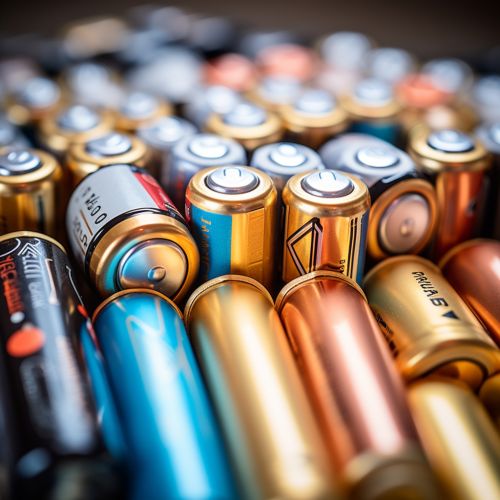Battery (electricity)
Introduction
A battery is a device that stores electrical energy in the form of chemical energy and converts it into electricity. Batteries are composed of one or more cells, each containing a positive electrode, a negative electrode, and an electrolyte.
History
The concept of a battery, or a device that can produce electricity, dates back to 1800 when Italian physicist Alessandro Volta created the first electrical battery, known as a voltaic pile. This was a significant development in the field of electricity, as it marked the first time that a stable, reliable source of electricity had been invented.
Types of Batteries
There are several different types of batteries, each with its own unique characteristics and uses. These include:
Primary Batteries
Primary batteries, also known as non-rechargeable batteries, are designed to be used once and then discarded. They are typically used in devices that have low current drain, are used intermittently, or are used away from a power source. Examples include alkaline batteries used in remote controls and disposable cameras.
Secondary Batteries
Secondary batteries, also known as rechargeable batteries, can be discharged and recharged multiple times. They are typically used in high-drain applications, such as mobile phones and laptops. Examples include lithium-ion, nickel-cadmium, and lead-acid batteries.
Wet and Dry Batteries
Batteries can also be classified as wet or dry. Wet cell batteries contain a liquid electrolyte, while dry cell batteries contain an electrolyte paste.
Battery Terminology
Understanding battery terminology is crucial to understanding how batteries work. Here are some key terms:
Voltage
Voltage is a measure of the electric potential difference between two points in a circuit. It's the driving force that pushes electric current around a circuit.
Current
Current is the flow of electric charge. It's measured in amperes (A).
Capacity
Capacity is the total amount of energy that a battery can store. It's typically measured in milliampere hours (mAh) or watt-hours (Wh).
Energy Density
Energy density is a measure of how much energy a battery can store for a given weight or volume. It's typically measured in watt-hours per kilogram (Wh/kg) or watt-hours per liter (Wh/L).
Battery Chemistry
Different types of batteries use different chemical reactions to generate electricity. Here are some of the most common battery chemistries:
Alkaline Batteries
Alkaline batteries use a chemical reaction between zinc and manganese dioxide to generate electricity.
Lithium-ion Batteries
Lithium-ion batteries use a chemical reaction involving lithium ions to generate electricity. They have a high energy density and are commonly used in portable electronics.
Lead-Acid Batteries
Lead-acid batteries use a chemical reaction between lead, lead dioxide, and sulfuric acid to generate electricity. They are commonly used in vehicles and backup power systems.
Battery Safety
Batteries, especially rechargeable ones, can pose safety risks if not handled properly. Overcharging, short-circuiting, or physically damaging a battery can cause it to leak, overheat, or even explode. Therefore, it's important to follow safety guidelines when using and disposing of batteries.
Environmental Impact
The production and disposal of batteries can have significant environmental impacts. Batteries contain various toxic and hazardous materials, such as lead, mercury, and cadmium, which can contaminate the environment if not disposed of properly. Therefore, recycling batteries is crucial to minimizing their environmental impact.
Future of Batteries
Research and development in battery technology continue to advance, with the aim of producing batteries that are more efficient, safer, and more environmentally friendly. Emerging technologies include solid-state batteries, lithium-sulfur batteries, and sodium-ion batteries.
See Also


